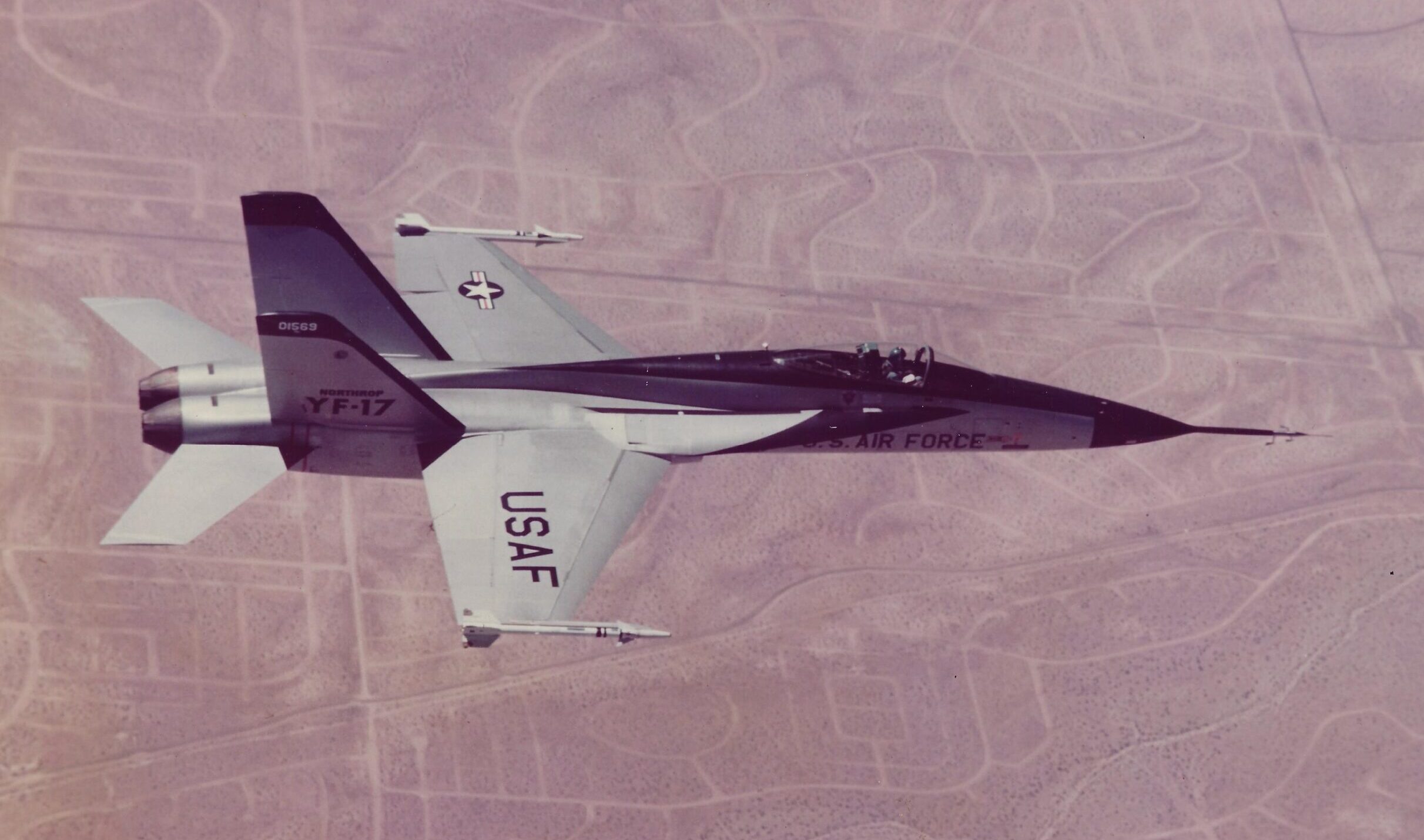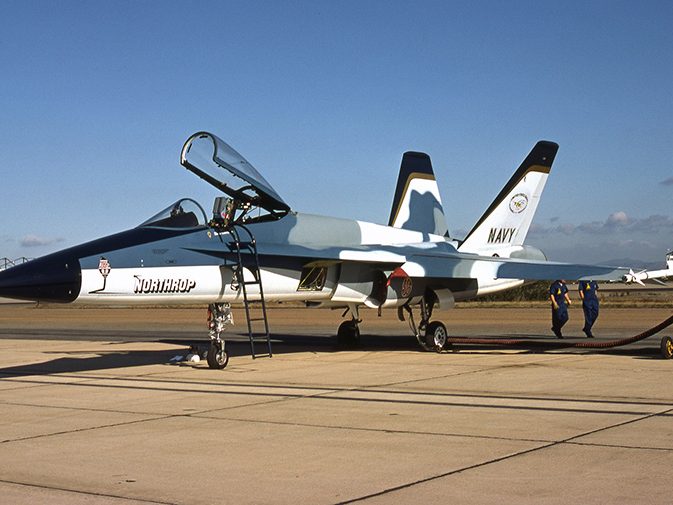The YF-17 Cobra was a Northrop Aircraft creation through NASA to support further testing and research of aircraft at transonic speeds. The YF-17 Cobra was, itself, born from the United States Air Force’s Lightweight Fighter Program.
The Lightweight Fighter Program called for a prototype that was small and low cost maintenance, with the capabilities of an air superiority fighter. Though losing out to the General Dynamics YF-16 (later to become the F-16 Fighting Falcon), the YF-17 would see bluer skies in the form of the later F/A-18 Hornet aboard the carriers of the United States Navy.
After the failed LWF fly-off competition for the YF-17 Cobra, tests began with NASA over a seven week period From May 27 to July 14, 1976, at the Dryden Flight Research Center, Edwards, California. Testing included in-flight pressure data recorded through sensors from all over the aircraft and afterbody of the aircraft to improve wind-tunnel predictions for future fighter aircraft. Studies included transonic maneuverability, and stability and control factors in controlled flights.
Also studied were stability and control and buffeting at high angles of attack as well as handling qualities at high load factors. Another objective of this program was to familiarize research center pilots with the operation of advanced high-performance fighter aircraft. During the seven-week program, all seven of the center’s test pilots were able to fly the aircraft with Gary Krier serving as project pilot
In the end, the YF-17 Cobra would set the stage for the first prototypes and production models of the highly successful F/A-18 series of aircraft, leading up to the “Super Hornet” design and the eventual successor to the much regarded F-14 Tomcat series of carrier-based interceptors.







